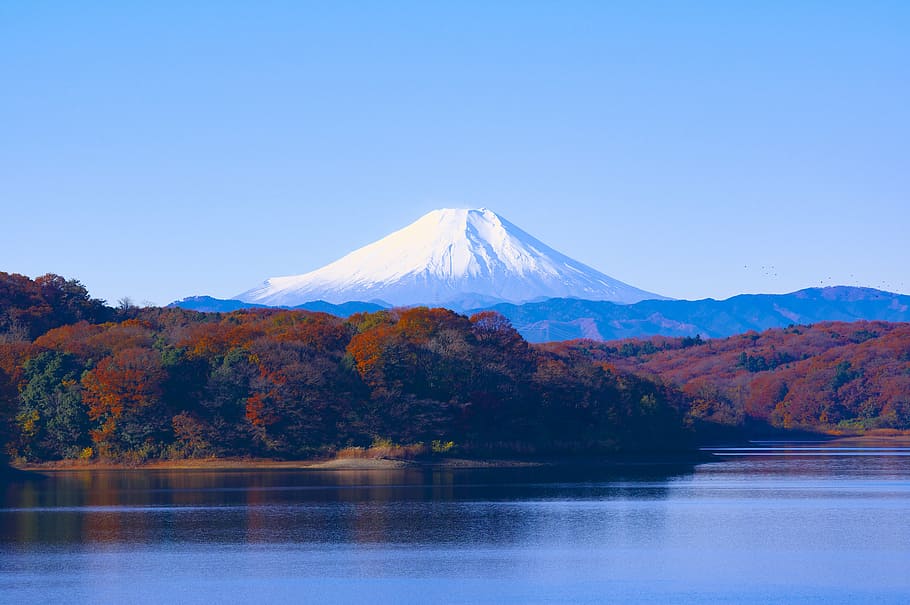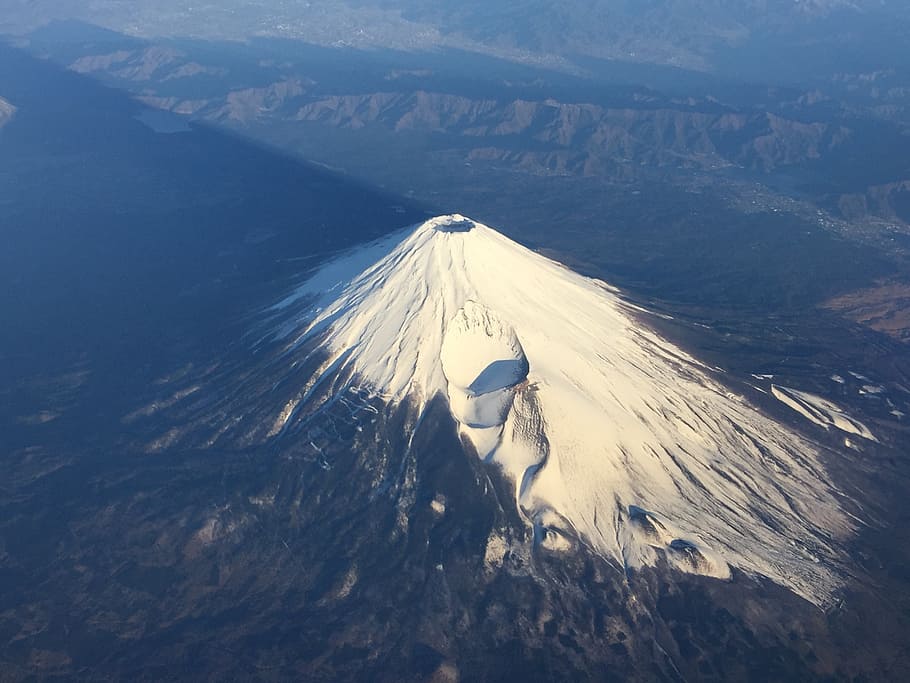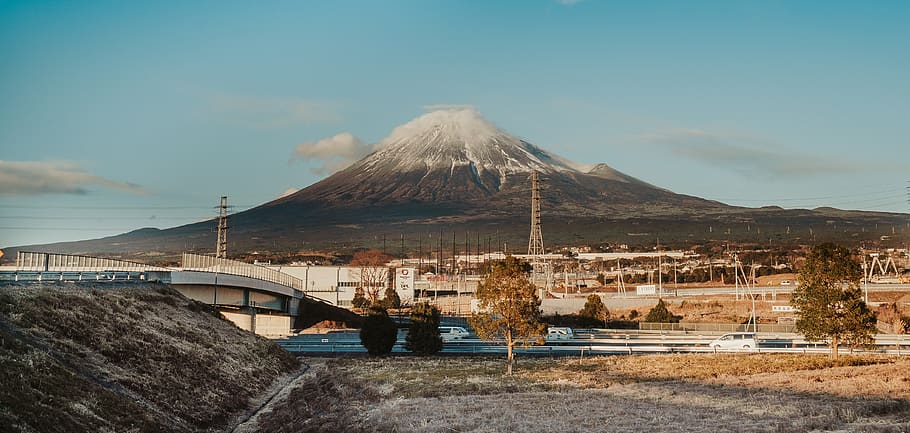リスク対応策 2023.11.26
RM81 「富士山噴火リスク」への日本の対応は?
目次
Copyright © Shinichiro Hatani 2023 All rights reserved
For those who prefer to read this column in English, the Japanese text is followed by a British English translation, so please scroll down to the bottom of the Japanese text.
テレビ朝日系列で放送されている「タモリステーション」。昨日、2023年11月25日(土)午後8時54分から「富士山噴火 その時日本は?~令和最新!生活シミュレーション〜」と題して、タモリと同放送局のアナウンサーの司会で、アルピニストの野口 健氏、東京大学名誉教授であり富士山科学研究所所長でもある藤井 敏嗣氏、そして防災アドバイザーの高荷 智也氏がスタジオ出演した非常に示唆に富む興味深い番組が放送された。
「キャプティブの設立と運営管理」を主たる事業として、今から10年前、2013年6月本格的に事業を開始した弊社、株式会社グローバル・リンクは、「キャプティブは、地震・噴火リスクへのリスクマネジメント手段として、その効用が最大に発揮される」と、その啓蒙、推進事業活動に従事してきた。単なる損害保険に飽き足らず、企業のリスクマネジメント手段を求めてこられた多くの企業から強い関心を寄せていただき、この10年間キャプティブの設立と運営管理事業を推進してしてきた。
しかし、南海トラフ巨大地震、また富士山噴火のリスクと、「国難」とも言うべき事態の到来が強く予見されるにもかかわらず、その対応に本気になっている企業、団体の数はあまりに少ないとも感じている。
京都大学の鎌田浩毅名誉教授執筆の「首都圏直下地震と南海トラフ」(MdN新書)には次の一文がある。
日本列島が「動く大地」となってしまった以上、そこで生きていく私たち一人ひとりが、この事実を受け入れて「覚醒」しなければなりません。これまでと違った考え方、行動力を持つ必要があるのです。
前述のとおり、政府は、首都圏直下地震が起きた場合の被害予想は、最大で1万1000人の犠牲者、全壊、焼失家屋61万棟、95兆円の経済被害が出ると想定しているが、鎌田名誉教授は、「東日本大震災によって事実上、東日本の内陸部では首都圏も含めて直下型地震が起きる確率が高まった、と考えた方がよいでしょう」と同書で警鐘を鳴らしている。
また、同名誉教授は「富士山噴火と南海トラフ」(「講談社」ブルーバックス)にも、次のように記されている。
「2011年に起きた東日本大震災によって、富士山をめぐる状況は一変した。東日本大震災は発生した日付の3月11日を取って『3.11』と呼ばれるが、その4日後に、富士山では震度6強の直下型地震が発生した。このとき、富士山の『マグマだまり』である重大な異変が起きた可能性があり、われわれ火山学者は全員肝を冷やした。まだ噴火が起きていないのは幸いと言うべきだが、もはや富士山はいつ噴火してもおかしくない『スタンバイ状態』に入ったと私は考えている。」
ここで、昨年2022年1月6日、本コラムに投稿した「CA32「富士山噴火」に備えるキャプティブ」を以下に再投稿したい。
執筆・翻訳者:羽谷 信一郎
English Translation
Risk Management (RM) 81 What is Japan’s response to the risk of a Mt Fuji eruption?
”Tamori Station” on TV Asahi, yesterday, Saturday 25 November 2023, from 8:54pm, was broadcast as “What will Japan do then, when Mt Fuji erupts? -REIWA latest! Life Simulation”, a very thought-provoking and interesting programme was broadcast, hosted by Tamori and the station’s announcer, with alpinist Ken Noguchi, Toshitsugu Fujii, Professor Emeritus of the University of Tokyo and Director of the Mt Fuji Science Institute, and disaster management advisor Tomoya Takani in the studio.
Global Link, Inc. started its full-fledged business 10 years ago in June 2013 with the main business of “Captive establishment, operation and management”,
Captive business is a risk management tool for earthquake and volcanic eruption risks, and we have been engaged in educational and promotional activities for Captive business. We have received strong interest from many companies that are not satisfied with mere non-life insurance and are looking for a risk management tool for their companies, and we have been promoting the establishment and operation of Captive business for the past 10 years.
However, despite the risk of a huge Nankai Trough earthquake and the eruption of Mt Fuji, and the strong prospect of what could be called a ‘national crisis’, we feel that too few companies and organisations are serious about dealing with the situation.
The following sentence is found in “The Metropolitan Area Earthquake and the Nankai Trough” (MdN Shinsho), written by Professor Emeritus Hiroki Kamata of Kyoto University.
Now that the Japanese archipelago has become a ‘moving land’, each of us who live there must accept this fact and ‘wake up’. We need to think and act differently than before.
As mentioned above, the government’s damage forecast in the event of an earthquake directly below the Tokyo metropolitan area assumes a maximum of 11,000 victims, 610,000 houses completely destroyed or burnt down, and economic damage of 95 trillion yen, but Professor Emeritus Kamata says: “The Great East Japan Earthquake has effectively increased the probability of a direct earthquake in the inland areas of eastern Japan, including the Tokyo metropolitan area. The Great East Japan Earthquake has effectively increased the probability of an earthquake occurring inland in eastern Japan, including in the Tokyo metropolitan area,” he warns in the same book.
He also wrote in “Fuji Eruption and the Nankai Trough” (Kodansha Blue Backs) as follows.
The Great East Japan Earthquake of 2011 completely changed the situation surrounding Mt Fuji. The Great East Japan Earthquake is called ‘3.11’ after the date of occurrence, 11 March, and four days later, an earthquake of magnitude 6+ occurred directly under Mt Fuji. Fuji’s ‘magma pool’, and all of us volcanologists were chilled to the bone. I should say that it is fortunate that no eruption has occurred yet, but I believe that Mount Fuji is now in a ‘standby state’ where it could erupt at any time.”
Here, I would like to re-post the following Captive for CA32 ‘Mt Fuji Eruption’, which I posted in this column last year on 6 January 2022.
Author/translator: Shinichiro Hatani
For those who prefer to read this column in English, the Japanese text is followed by a British English translation, so please scroll down to the bottom of the Japanese text.
CA32「富士山噴火」に備えるキャプティブ
キャプティブを設立することによって経営に大きな効用を与える保険、つまり「キャプティブを設立する際に対象とすべき保険」は、「リスクの強度が強く、発生確率が低いリスク」に対応する保険であり、これまでのコラムに幾度か記してきたとおり、その筆頭は地震保険である。
「地震保険」と記したが、正確には日本には「地震保険」という名称の保険は存在しない。「地震保険」と称する補償は、個人保険分野、また企業保険分野、いずれの分野に於いても、火災保険を「主契約」として、その主契約に「地震リスクを補償する特約」(地震危険補償特約)を付帯することによって構成するものである。ここで言う「特約」とは、基本的な補償内容を定めている「主契約」の「普通保険約款」の内容を変更するものであり、新たな補償を追加、もしくは削除するために付帯する「特別約款」のことであり、略して「特約」と呼ばれている。
個人保険分野に於ける「地震保険」の保険金額は、主契約の火災保険の支払限度額(保険金額)の30%~50%の範囲内で設定され、原則として、同一敷地内ごとに建物は5,000万円、家財は1,000万円が限度となる。
一方、企業保険分野では、保険金額の制限は特になく、引受保険会社の引受判断に委ねられる。しかし、最終的な引受判断は引受保険会社(元受保険会社)に対して再保険補償を提供する再保険会社との協定、「再保険契約」によって決まる。日本には世界的にも大きな3つのメガ損保グループが存在する。しかし、地震頻発国である日本では、「地震リスク補償」への関心も高いため、海外の再保険会社のサポート無しには「地震保険」を維持していくことは困難であるからである。
こういった点からも、元受保険会社の再保険キャパシティ(引受力)を使うことなく、独自に海外の再保険会社で地震保険の再保険を用意して元受保険会社に提供することは、元受保険会社の引受力をサポートすることにもなるため、「ガラパゴス型損害保険会社」ではなく「キャプティブの設立を積極的にサポートしてくれる損害保険会社」であれば元受保険会社のサポートを容易に得ることができる。その結果、「今の保険会社から提供されている地震保険の保険金額では足りないが、なんとかならないだろうか」と考えている企業にとっては、キャプティブは、企業経営上高い効用を与える存在となる。
発生したときには「甚大な損害を被る可能性のある地震リスク」であるが、また「何時起きるのか誰も予測できないリスク」でもある。このため、南海トラフ巨大地震、首都圏直下大地震等への対応の必要性が叫ばれて久しいが、「何時起きるか解らない、また起きないかもしれない地震にそんな高い保険料は出せない」とばかりに、いまだに多くの企業で掛けられていない保険でもある。そういう企業にとっては、これまでのコラムで種々述べてきたように、「実際に掛かる保険コストを大きく削減することができる」という点で、「キャプティブは地震保険を掛ける有効な手段となる」のである。
この「地震保険」を構成する「地震危険補償特約」は、「地震リスク」のみを補償するものではない。無論、地震に直接的に関係する「津波リスク」も補償するが、それ以外に「火山噴火リスク」も補償する特約でもある。

1.「富士山大爆発」
大学を卒業して外資系損害保険会社に入社、1981年の長期出張に続いて、翌年夏もニューヨーク本社に1ヶ月ほど研修を兼ねた出張をおこなっていたとき、日本の事務所との電話の際、「富士山が噴火するなんていうことを言っている人がいて、本を出版した」ということを聞き、「そんなのあり得ないでしょう、富士山は休火山じゃなかった?なんて妙なことを言っているのかね」と言ったことをなぜか鮮明に憶えている。
元気象庁予報官であった相楽 正俊氏が著し、1982年8月「富士山大爆発―運命の1983年9月×日!」と題して徳間書店(トクマブックス)」が発刊したものがそれである。その後、同氏は「カウントダウン 首都圏大地震 」を著し、本の帯には「1995年9月9日午後0時37分直下型大地震が東京を直撃する」と記されていた。しかし、1983年に富士山は噴火も爆発もせず、また1995年に東京を大地震が襲うこともなかった。
現代の科学では不可能な、地震や噴火が起きる日時を特定して予測していることで解るとおり、人々の興味を引きやすいテーマに対してセンセーショナルな書き方がなされていたが、予測が外れた後は、マスコミから「変人扱いされたような報道をされていたこと」を記憶している。ただ、書かれている事は事実であり、科学的裏付けもあった。しかし、予測についてはいくつもの「仮定」があり、その「仮定を強引に予測にまで持って行った手法」であった。「富士山大爆発―運命の1983年9月×日!」の背表紙には、以下のような一文が記されている。
「恐るべき90パーセントの確率!1983年9月、日本のシンボル富士山が、275年間の沈黙を破って大爆発を起こす。相前後して、東京を直下型大地震が襲う。世界をおおう異常気象のピークが来るのだ。気象学の権威が明かす戦慄の警告!」
それから38年後の昨年、2021年10月から12月に掛けて放映されたTBSのドラマ「日曜劇場」「日本沈没ー希望のひとー」、筆者もその引き込まれるような物語の展開に毎週欠かさず見ていたが、その最終回で、「富士山が大噴火するシーン」が描かれていたのが印象的であった。

2.富士山の噴火史
「火山噴火予知計画(文部省測地学審議会(現文部科学省科学技術・学術審議会)の建議」により、火山現象及び関係機関の研究、業務に関する成果、情報の交換について総合的判断を行うことを目的として、1974年に「火山噴火予知連絡会」が設置された。この連絡会の事務局は気象庁が担当、委員は学識経験者及び関係機関の専門家から構成されている。翌1975年「火山噴火予知連絡会」は、それまで休火山と見られていた富士山を活火山として選定した。つまり「何時噴火してもおかしくない日本の活火山111の一つ」に富士山は指定されたのである。
富士山は、フィリピン海プレート、北米プレート、ユーラシアプレートが接する地域に位置して、標高は 3,776m で日本の最高峰であり最大の火山である。気象庁のホームページを見ると、富士山の噴火に関しては「781年から現在まで17回噴火と考えられる現象があった」と記されている。
なかでも大規模な噴火は二度起きている。一つが、864~866年に起きた「貞観噴火」である。溶岩が富士山周辺を広く覆い、「青木ヶ原溶岩」を形成、その後この溶岩の上に「青木ヶ原樹海」と呼ばれる広大な森林地帯が形成されたが、この大噴火は「平安時代の『東日本大震災』とも呼ばれる巨大地震」、貞観地震の5年前に起きた。そして、もう一つが、日本最大級の地震「宝永地震」の49日後に始まり、江戸市中にまで大量の火山灰を降下させた、1707年に起きた「宝永噴火」である。
それらは、気象庁のホームページでは、以下のように記されている。
| 864~66(貞観6~7)年 | 大規模:噴火 | 864年6月に噴火、降砂礫多量。噴火場所は北西山腹。 長尾山付近から溶岩流出(青木ケ原溶岩)、北西に流れたものは本栖湖に達し、また「せのうみ」を精進湖(しょうじこ)、西湖(さいこ)に二分、北東に流れたものは吉田付近に達する。この溶岩で人家埋没、湖の魚被害。噴火の最盛期は噴火開始約2ヶ月程度まで。マグマ噴出量は1.2 DRE km3。 |

宝永噴火の噴火口が山体中腹に大きく口を開けているのが見える。The crater of the Hōei eruption can be seen opening wide in the middle of the mountain.
| 1707(宝永4)年 | 大規模:噴火 | 12月16日噴火(宝永噴火)。軽石・スコリア降下。噴火場所は南東山腹(宝永火口)。 噴火1~2ヶ月前から山中のみで有感となる地震活動。十数日前から地震活動が活発化、前日には山麓でも有感となる地震増加(最大規模はM5級)。12月16日朝に南東山腹(現在の宝永山)で爆発し、黒煙、噴石、空振、降灰砂、雷。その日のうちに江戸にも多量の降灰。川崎で厚さ5cm。 噴火は月末まで断続的に起きたが、次第に弱まる。家屋・農地が埋まった村では餓死者多数。 初期はデイサイト、その後玄武岩のプリニー式噴火。江戸にも大量の降灰。噴火後洪水等の土砂災害が継続。マグマ噴出量は0.7 DRE km3。(VEI5) |
(出典)「気象庁」ホームページ (Source: Japan Meteorological Agency website)
1707年の宝永噴火以降、富士山は平穏を保っているが、それ以来300年以上もマグマが溜まり続けていて、「次の噴火がいつ起きるか切迫した状態」だと感じる。
3.南海トラフ大地震と富士山の噴火の連動
昨年、2021年3月、「富士山火山防災対策協議会」は、溶岩噴出量を従来推定していた量の約2倍に変更、17年ぶりに「富士山噴火ハザードマップ」を改定した。
溶岩は神奈川県まで及び、東海道新幹線、東名・新東名高速を飲み込む可能性を指摘するものである。政府「中央防災会議」のシミュレーションによると、大規模な噴火発生後2~3時間ほどで火山灰が遠く埼玉県まで及ぶ一帯で降り積もり、飛行機の離着陸、鉄道の運行と車の通行が難しくなり、関東一円の広い範囲で交通機関がマヒ、首都機能がマヒする可能性が記されている。
更に、火山灰は精密電子・電気機器に入ると誤作動を起こす。また、雨が降った場合、電気設備に付着した火山灰によって大規模な停電が起きるほか、上下水道が使えなくなる危険性も指摘されている。地震のように衝撃的かつ瞬間的に大損害を与えるのではなく、じわじわと国民生活に大きな負の影響を与え続けていくのである。
昨年暮れ12月3日午前2時過ぎ、山梨県東部を震源とする震度4の地震が発生、その後午前6時半過ぎに最大震度5弱の地震が起きた。記者会見で気象庁の担当官は「富士山の火山活動との関連性はない」と述べていたが、火山学の専門家の考えとは異なるのではないかと感じる。
「富士山噴火と南海トラフ」(「講談社」ブルーバックス:京都大名誉教授鎌田浩毅(著))の「まえがき」に鎌田名誉教授は次のように記している。
「2011年に起きた東日本大震災によって、富士山をめぐる状況は一変した。東日本大震災は発生した日付の3月11日を取って『3.11』と呼ばれるが、その4日後に、富士山では震度6強の直下型地震が発生した。このとき、富士山の『マグマだまり』である重大な異変が起きた可能性があり、われわれ火山学者は全員肝を冷やした。まだ噴火が起きていないのは幸いと言うべきだが、もはや富士山はいつ噴火してもおかしくない『スタンバイ状態』に入ったと私は考えている。」
「そして何より、富士山の噴火はやがて起きる南海トラフ巨大地震と連動するおそれがある。歴史を振り返ってみると、江戸時代の宝永の大噴火は、それに先立って南海トラフでマグニチュード9クラス巨大地震(宝永地震と呼ばれる)が発生してからわずか49日後に起きている。」
「富士山噴火と巨大地震の連動にどう対応するかは、我が国にとって存亡をかけた喫緊の課題と言っても過言ではないのである」
南海トラフ巨大地震の強い揺れが加われば、富士山の直下にあるマグマだまりからマグマが勢いよく噴出して大噴火に至る、南海トラフ巨大地震と富士山の噴火には連動の恐れがあるということである。

今回のまとめ
「富士山噴火など起きない」という長い間の「常識」が、1975年富士山が「活火山」と定義された頃から大きく変わり、いまでは「いつか必ず噴火する」ということが「常識」となっている。
政府の「富士山噴火ハザードマップ」を受け、富士山が位置する静岡県、山梨県、また噴火によって吹き出す溶岩流の直接的な影響を受ける可能性のある神奈川県を含め、更には「降灰によって大きな影響を受ける」、東京都、千葉県、埼玉県、それらの各自治体でも「ハザードマップ」の見直しがなされた。
「南海トラフ大地震、首都圏直下大地震」のみならず「富士山の噴火」までも企業にとって喫緊の課題となってきたのである。「地震保険は高いから」と保険を購入することを躊躇する企業も多いと聞くが、いまや「地震・噴火・津波リスク」への対応は「待った無し」である。
東日本大震災の時にあちらこちらで聞かれた「想定外」という言葉は企業経営にとっては禁句である、企業を経営するためには企業経営上のあらゆるリスクへの対応を金融商品取引法で求められ、ステークホルダーに開示することを併せて求められているからである。
「保険料が高いために地震危険補償特約を付けられない」のなら、「地震補償コストを低減させる方法」を実行すべきではないだろうか。その最たる手段が「キャプティブの設立」である。その実行も一刻も早くすべきである。理由は明白である、「一元予報官」ではなく、「日本政府が、非常に高い確率で『南海トラフ巨大地震』、また『富士山の噴火』が起きる」と既に国民に周知しているから」である。
執筆・翻訳者:羽谷 信一郎
English Translation
Captive (CA) 32 – Captives prepare for Mt Fuji eruption
The type of insurance that would provide the greatest benefit to the business of establishing a captive, and which should be covered when establishing a captive, is insurance against “risks of high intensity and low probability of occurrence”, the first of which is earthquake insurance, as I have noted in several previous columns.
Although I have referred to it as “earthquake insurance”, there is no such insurance in Japan. In both the personal and corporate insurance fields, the coverage called “earthquake insurance” consists of a fire insurance policy as the “main policy”, to which is added a “special clause to compensate for earthquake risks” (special clause to compensate for earthquake risks). The term “special clause” here refers to a “special clause” that is attached to the main policy in order to change the contents of the ordinary insurance clauses, which set out the basic coverage, and to add or delete new coverage, and is called a “special clause” for short.
The amount of insurance for earthquake insurance in the field of personal insurance is set within the range of 30% to 50% of the limit of liability (insurance amount) of the main fire insurance policy. As a general rule, the limit is 50 million yen for buildings and 10 million yen for household goods for the same premises.
In the field of corporate insurance, on the other hand, there are no specific limits on the amount of insurance, which is left to the underwriting judgment of the insurance company. However, the final underwriting decision is determined by a “reinsurance contract”, which is an agreement with a reinsurance company that provides reinsurance cover to a primary insurer. Japan is home to three of the largest non-life insurance groups in the world. However, as a country with frequent earthquakes, Japan has a high level of interest in “earthquake risk compensation”, which is why it is difficult to maintain “earthquake insurance” without the support of foreign reinsurers.
In this regard, it is important to provide earthquake insurance reinsurance to primary insurers through overseas reinsurance companies without using the reinsurance capacity of primary insurers. This would also support the underwriting capacity of the primary insurer, as long as it is not a “Galapagos-type non-life insurer” but a “non-life insurer willing to support the establishment of a captive”. As a result, a captive can be of great benefit to a company that is wondering whether the amount of earthquake insurance provided by its current insurer is sufficient.
An earthquake is a “potentially catastrophic risk”, but it is also a “risk that no one can predict when it will happen”. For this reason, it has been a long time since there were calls for measures to deal with the Nankai Trough and the Tokyo metropolitan area, but many companies still do not take out insurance because they cannot afford the high premiums for earthquakes that may or may not happen. For those companies, captives can be an effective way to insure against earthquakes because, as I have discussed in previous columns, they can significantly reduce the actual cost of insurance.
The special clause for earthquake risk, which forms part of the earthquake insurance policy, does not cover only the earthquake risk. It also covers the risk of tsunami, which is directly related to earthquakes, as well as the risk of volcanic eruptions.
1. “The Great Mt Fuji Explosion”
After graduating from university and joining a foreign non-life insurance company, I went on a long business trip in 1981, followed by a month-long training trip to the New York head office the following summer.
At that time, in a phone call with my office in Japan, I heard that someone was saying that Mt. Fuji was going to erupt and that he had published a book about it. For some reason, I vividly remember saying, “That’s impossible, Mt. Fuji, it’s a dormant volcano? what a strange thing to say”.
The book was written by Mr. Masatoshi Sagara, a former forecaster of the Japan Meteorological Agency, and published by Tokuma Shoten Publishing Co. (Tokuma Books) in August 1982. Later, he wrote a book entitled “Countdown to the Great Tokyo Earthquake”, the wraparound band of which stated that “at 0:37 pm on September 9, 1995, a major earthquake of the direct type will hit Tokyo”. However, Mount Fuji did not erupt or explode in 1983, nor did a major earthquake strike Tokyo in 1995.
As you can see from the fact that he predicted the date and time of earthquakes and volcanic eruptions, which are impossible to predict with modern science, he wrote sensationally on a subject that people were easily interested in, but after his predictions failed, I remember that he was treated like a crank in the media. However, what was written was true, and there was scientific support for it. However, the prediction was based on a number of “assumptions” and the “method of forcing the assumptions into a prediction”. On the back cover of the book “The Great Fuji Explosion – September X 1983!” ,the following sentence is written.
In September 1983, Japan’s iconic mountain, Mt Fuji, will explode after 275 years of silence, followed by a massive earthquake in Tokyo. This will be the peak of the world’s abnormal weather. A shuddering warning from an authority on meteorology!
Thirty-eight years later, in the final episode of the TBS drama series “Sinking of Japan: A Man of Hope”, which aired from October to December 2021, the scene of a major eruption of Mt. Fuji.
2. Fuji’s eruption history
In 1974, the Liaison Committee for the Prediction of Volcanic Eruptions was established in accordance with the “Plan for the Prediction of Volcanic Eruptions proposed by the Geodesy Council of the Ministry of Education, Culture, Sports, Science and Technology (now the Science and Technology Council of the Ministry of Education, Culture, Sports, Science and Technology)” for the purpose of making a comprehensive judgment on volcanic phenomena and the exchange of results and information on the research and work of related organizations. The Japan Meteorological Agency (JMA) is the secretariat of this liaison committee, and its members consist of academic experts and specialists from related organizations. The following year, in 1975, the Liaison Committee on the Prediction of Volcanic Eruptions selected Mount Fuji, which had been considered a dormant volcano, as an active volcano. Fuji was designated as one of the 111 active volcanoes in Japan that could erupt at any time.
Fuji is located in an area where the Philippine Sea Plate, the North American Plate and the Eurasian Plate meet, and is the highest and largest volcano in Japan at 3,776m above sea level. According to the Japan Meteorological Agency (JMA) website, Mt Fuji has erupted 17 times since 781.
There have been two major eruptions. One of these eruptions was the “Jyogan Eruption”, which occurred between 864 and 866. This eruption occurred “five years before the Jyogan earthquake, a huge earthquake that was called the ‘Great East Japan Earthquake’ of the Heian period”. The other eruption was the 1707 Hōei Eruption, which began 49 days after one of Japan’s largest earthquakes, the Hōei Earthquake, and dropped a huge amount of volcanic ash on the city of Edo.
They are described on the JMA website as follows.
864-66 (Jyogan 6-7) Large scale: eruption in June 864, large amount of sand and gravel. The eruption took place on the northwestern flank of the mountain.
The lava flowed northwest to Lake Motosu and divided Senoumi into Lake Shoujiko and Lake Saiko, with the northeast flow reaching Yoshida. The lava buried houses and damaged fish in the lake. The peak of the eruption is about two months after the start of the eruption. The magma eruption volume is 1.2 DRE km3.
1707 (Hōei 4) Large: eruption 16 December (Hōei eruption). Pumice and scoria fall. The eruption took place on the southeast flank of the mountain (Hōei Crater).
One to two months before the eruption, seismic activity was felt only in the mountain. On the morning of 16 December, an explosion occurred on the southeast flank of the volcano (present-day Mount Hōei), causing black smoke, cinders, aerial tremors, ash fall, and lightning. On the same day, a large amount of ash fell in Edo. In Kawasaki, it was 5 cm thick.
The eruption was intermittent until the end of the month, but gradually weakened. Many people died of starvation in villages where houses and farmland were buried.
The initial eruption was dacitic, followed by a basaltic plinian eruption. Large amounts of ash fell in Edo. Flooding and other landslides continued after the eruption. Magma eruption volume was 0.7 DRE km3 (VEI5).
Since the 1707 Hōei eruption, Mount Fuji has remained calm. Since then, magma has been accumulating for over 300 years, and we can assume that the next eruption could happen at any time.
3. Nankai Trough Earthquake and Mt Fuji Eruption
Fuji Volcano Disaster Prevention Council changed the amount of lava spouting to about twice the amount previously estimated, and revised the “Mt. Fuji eruption hazard map” for the first time in 17 years. It points out that the lava could reach as far as Kanagawa Prefecture and swallow the Tokaido Shinkansen and the Tomei and Shin-Tomei motorways. According to a simulation by the government’s Central Disaster Management Council, within two to three hours of a major eruption, volcanic ash could fall in areas as far away as Saitama Prefecture, making it difficult for planes to take off and land, for railways to operate and for cars to pass. It also states that the capital could be paralyzed.
Furthermore, volcanic ash can cause malfunctions in precision electrical equipment. When it rains, volcanic ash on electrical equipment can cause massive power outages, and there is also a risk that water and sewage systems could become unusable. Like earthquakes, volcanic eruptions do not cause instantaneous and shocking damage, but rather have a gradual, negative impact on people’s lives.
Last year, just after 2am on 3 December, an earthquake of magnitude 4 struck in eastern Yamanashi Prefecture, followed by an earthquake of magnitude 5 just after 6.30am.
The Japan Meteorological Agency said at a press conference, “We do not see any connection with the volcanic activity of Mt. Fuji”. However, the experts seem to think a little differently.
“Fuji Volcanic Eruption and the Nankai Trough” (Kodansha Blue Backs: Hiroki Kamata, Professor Emeritus, Kyoto University), Professor Emeritus Kamata writes in the Foreword:
“The Great East Japan Earthquake in 2011 changed the situation regarding Mt.Fuji. The Great East Japan Earthquake is called ‘3.11’ after the date of its occurrence, March 11. Four days later, a magnitude 6-plus earthquake struck Mt.Fuji. We volcanologists were all chilled by the possibility that something serious had happened in the magma reservoir. It is fortunate that it has not erupted yet, but I believe that Mt Fuji is now on standby, ready to erupt at any moment.”
“And above all, the eruption of Mt Fuji could be linked to a huge earthquake in the Nankai Trough. Looking back in history, the Hōei eruption of the Edo period occurred just 49 days after a massive magnitude 9 earthquake (called the Hōei earthquake) struck the Nankai Trough”.
“It is no exaggeration to say that how to respond to the linkage between the eruption of Mount Fuji and the massive earthquake is an urgent matter of survival for our country”.
A strong tremor from a major earthquake in the Nankai Trough could trigger a massive eruption of magma from a bubbling pool directly beneath Mount Fuji.
Summary of this issue
The long-held belief that Mt Fuji would never erupt has changed dramatically since 1975, when it was defined as an active volcano.
Fuji, including Shizuoka and Yamanashi Prefectures, Kanagawa Prefecture, which could be directly affected by lava flows from an eruption, and Tokyo, Chiba and Saitama Prefectures, which could be heavily affected by ash fall, have also reviewed their hazard maps.
In addition to the Nankai Trough and the Tokyo metropolitan area, the eruption of Mount Fuji has also become an urgent issue for companies. Many companies are hesitant to buy earthquake insurance because it is too expensive, but the need to deal with the risk of earthquakes, eruptions and tsunamis is now a matter of urgency. The word “unexpected”, which was heard everywhere at the time of the Great East Japan Earthquake, is not a word that should be used to describe the management of a company, as the Financial Instruments and Exchange Act requires companies to deal with all the risks involved in running a business and to disclose them to their stakeholders.
If insurance premiums are too high to cover earthquake risks, then why not implement measures to reduce the cost of earthquake cover? The best way to do this is to establish a captive. This should be done as soon as possible. The reason for this is obvious: the Japanese government, not a former forecaster, has already informed the public that there is a very high probability of a major earthquake in the Nankai Trough and the eruption of Mt.Fuji.
Author/translator: Shinichiro Hatani

